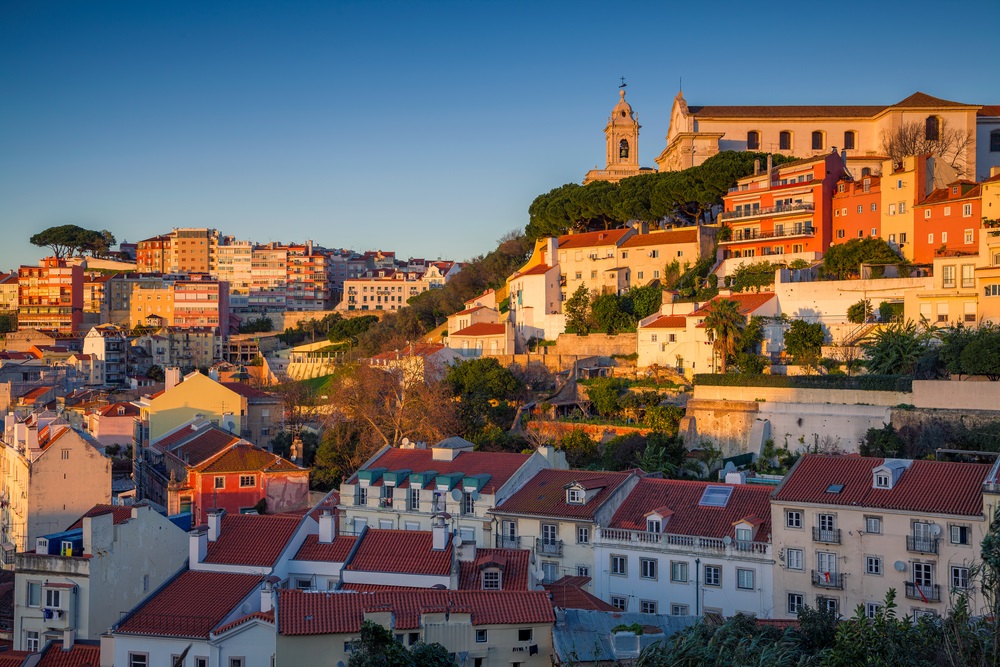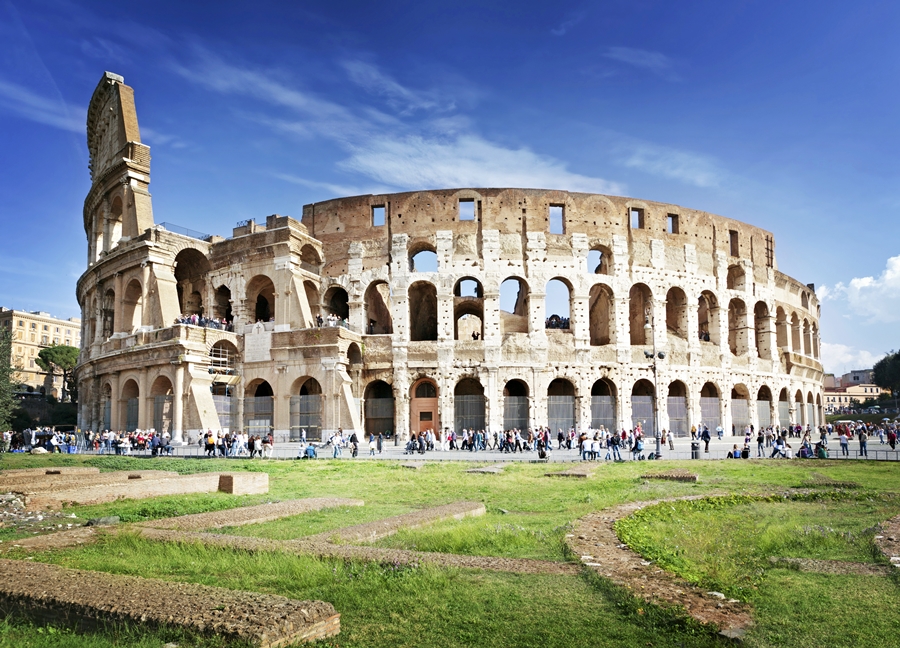Europe, often referred to as the cradle of Western civilization, boasts a rich tapestry of history and culture. The continent is home to many of the world’s oldest cities, each with its own unique story and heritage. These ancient urban centers not only offer a glimpse into the past but also serve as vibrant modern cities with much to offer.
In this article, we’ll explore some of the oldest cities in Europe, and hopefully give you some inspiration for your future European tours.
✨Check our Summer Vacation Tour Packages for Europe to plan a budget-friendly trip now.

TOP 20 Oldest Cities in Europe
The title of “oldest city in Europe” is a fascinating debate among historians. While several cities vie for the top spot, the contenders all share a remarkable history of continuous habitation stretching back thousands of years. Let’s explore some of these ancient cities:
1. Plovdiv, Bulgaria
Inhabited since: Around 6,000 BC
Plovdiv is often cited as the oldest continuously inhabited city in Europe, with a history dating back to 6,000 BC. Situated in southern Bulgaria, Plovdiv is known for its well-preserved Roman theater, charming old town, and vibrant cultural scene. The city has been influenced by Thracian, Roman, Byzantine, and Ottoman civilizations, each leaving their mark on its rich heritage.
Key Attractions:
- Roman Theater:An ancient amphitheater still used for performances today.
- Old Town:Cobblestone streets and colorful houses reflecting Bulgarian National Revival architecture.
- Nebet Tepe:A hill with ancient ruins offering panoramic views of the city.
2. Argos, Greece
Inhabited since: Around 5,000 BC
Argos is one of the oldest cities in Europe and Greece, with a history that dates back to around 5,000 BC. Located in the northeastern part of the Peloponnese, Argos was a major center of trade and culture in ancient Greece, rivaling cities like Athens and Sparta.
Today, visitors can explore its ancient ruins, including the Heraion of Argos, dedicated to the goddess Hera, and the ancient theater of Argos, which still hosts performances to this day. With its rich history, archaeological treasures, and warm Mediterranean climate, Argos offers a captivating glimpse into Greece’s ancient past.
Key Attractions:
- Ancient Theater of Argos:One of the largest ancient theaters in Greece.
- Larisa Fortress:A hilltop fortress with remains dating back to classical antiquity.
- Archaeological Museum of Argos:Exhibits artifacts from various periods of the city’s history.
3. Athens, Greece
Inhabited since: 5,000-4,000 BC
Athens is often considered the cradle of Western civilization and democracy. As one of the oldest cities in Europe, its history spans over 3,000 years, with habitation dating back to 5000-4000 BC. The city’s ancient monuments, such as the Acropolis and Parthenon, stand as testaments to its glorious past. Walking through the Plaka district, you can feel the echoes of ancient Greece in the narrow, winding streets lined with neoclassical buildings.

Key Attractions:
- Acropolis:A UNESCO World Heritage site and one of the most famous ancient ruins in the world.
- Parthenon: The iconic temple dedicated to the goddess Athena.
- Ancient Agora:The heart of ancient Athens, a bustling marketplace and political center.
Tours4fun recommendations:
7-Day Athens, Mykonos and Santorini Tour (From $1437.14)
- Explore the stunning city of Athens
- Travel to the amazing island of Mykonos
- Walk the enchanting streets of Santorini
4-Day Athens City Tour with 3-Island Cruise (From $494.24)
- Explore the heart of Greece and enjoy three incredible nights in Athens
- Includes a half day Athens sightseeing tour with the Acropolis
- Three island cruise to Aegina, Poros, and Hydra
12-Day Greece Vacation Tour from Athens (From $2861.11)
- Discover the ancient wonders of the Acropolis and the Parthenon temple in Athens
- Dine on delicious barbecue while watching the sun set on Santorini from the deck of a catamaran
- The Mediterranean island life of Crete
- Enjoy the ancient architecture of Heraklion, Chania and Rethymnon
4. Larisa, Greece
Inhabited since: 5,000-4,000 BC
Located in the fertile plains of Thessaly, Larisa has been continuously inhabited for over 7,000 years. It was an important center in ancient Greece and played a significant role in the region’s history. Larisa today is a vibrant city that blends its ancient heritage with modern living.
Key Attractions:
- Ancient Theatre of Larisa:An important archaeological site from the 3rd century BC.
- Alcazar Park:A large urban park with historical monuments and recreational facilities.
- Archaeological Museum of Larisa:Showcases the region’s extensive historical and cultural artifacts.
5. Thebes, Greece
Inhabited since: 3,200-3,000 BC
Thebes, located in central Greece, has a rich history that dates back to around 3,000 BC. Known for its role in Greek mythology, particularly in the stories of Oedipus and Hercules, Thebes was also a significant military power in ancient Greece. Today, visitors can explore its archaeological sites and enjoy the city’s vibrant cultural scene.
Key Attractions:
- Cadmea: The ancient citadel of Thebes.
- Archaeological Museum of Thebes:Houses a vast collection of artifacts from the city and surrounding areas.
- Mycenaean Tombs:Ancient burial sites that provide insights into the city’s early history.
6. Shkodra, Albania
Inhabited since: 2,250-2,000 BC
Shkodra, one of Albania’s oldest cities, has a rich history influenced by Illyrian, Roman, Byzantine, and Ottoman cultures. It is known for its vibrant arts scene, historical sites, and beautiful natural surroundings, including the scenic Lake Shkodra.
Key Attractions:
- Rozafa Castle: A historic fortress with panoramic views over the city and lake.
- Marubi National Museum of Photography:Showcases the history of Albanian photography.
- Shkodra Historical Museum:Displays artifacts from different periods, reflecting the city’s diverse heritage.
7. Chania, Greece
Inhabited since: 1,700-1,500BC
Located on the island of Crete, Chania is one of the oldest cities in Europe, with a history that stretches back to the Minoan civilization. The city is renowned for its Venetian harbor, old town, and stunning beaches. Chania has a unique blend of Greek, Venetian, and Ottoman influences, making it a fascinating place to explore.
The Venetian Harbor, with its iconic lighthouse and waterfront cafes, is a popular spot for both locals and visitors. Chania’s Archaeological Museum and Maritime Museum also offer insights into its ancient past.
Key Attractions:
- Venetian Harbor:A picturesque area with a lighthouse and waterfront cafes.
- Old Town:A maze of narrow streets filled with shops, restaurants, and historical sites.
- Archaeological Museum: Housed in a former Venetian church, showcasing artifacts from the Minoan era.
8. Nafplio, Greece
Inhabited since: Around 1,400 BC
Nafplio is a coastal city with a fascinating history. It served as the first capital of modern Greece and has preserved its medieval and neoclassical charm. The city is known for its beautiful architecture, historic sites, and picturesque seafront.
Key Attractions:
- Palamidi Fortress: An impressive fortress offering stunning views of the city and sea.
- Bourtzi Castle: A small fortress located on an islet in the harbor.
- Archaeological Museum of Nafplio:Houses artifacts from the region’s history, including ancient and medieval periods
9. Larnaca, Cyprus
Inhabited since: Around 1,400 BC
Larnaca, situated on the southern coast of Cyprus, is one of the oldest cities in Europe, with a history that dates back to around 1,400 BC. The city is known for its beautiful beaches, ancient ruins, and vibrant cultural scene. Larnaca has a mix of Greek, Turkish, and Middle Eastern influences, making it a unique destination.
Key Attractions:
- Kition Archaeological Site: Remains of an ancient city with ruins from the Mycenaean and Phoenician periods.
- Church of Saint Lazarus: A stunning example of Byzantine architecture.
- Larnaca Salt Lake: A natural attraction that is home to flamingos during the winter months.
10. Lisbon, Portugal
Inhabited since: Around 1,200 BC
Lisbon, the capital of Portugal, is one of the oldest cities in Western Europe, with roots dating back to the Phoenician era around 1,200 BC. Known for its hilly landscape, pastel-colored buildings, and scenic views over the Tagus River, Lisbon is a city that beautifully blends its ancient past with contemporary culture.
The Alfama district, with its narrow, winding streets and traditional Fado music, offers a glimpse into Lisbon’s Moorish past. The city’s iconic landmarks, such as the Belem Tower and the Jeronimos Monastery, are UNESCO World Heritage Sites that reflect its rich maritime heritage.

Key Attractions:
- Belem Tower:A fortified tower that is a UNESCO World Heritage site.
- Alfama District:The oldest neighborhood in Lisbon, known for its narrow streets and traditional Fado music.
- Jerónimos Monastery:A stunning example of Manueline architecture and another UNESCO site.
11. Cadiz, Spain
Inhabited since: Around 1,100 BC
Cadiz, located in southwestern Spain, is one of the oldest continuously inhabited cities in Western Europe, with a history that dates back to around 1,100 BC. The city is known for its beautiful beaches, historic old town, and lively festivals. Cadiz has a rich maritime history and has been a significant port for centuries.
Key Attractions:
- Cathedral of Cadiz:A stunning baroque and neoclassical cathedral with breathtaking views from its tower.
- Tavira Tower: An 18th-century watchtower offering panoramic views of the city.
- Roman Theater: One of the largest Roman theaters in Spain, discovered in 1980
12. Rome, Italy
Inhabited since: 1200-1000 BC
Rome, known as the Eternal City, is a living museum of history and culture. Rome’s historical significance is unmatched, with landmarks such as the Colosseum, the Roman Forum, and the Pantheon drawing millions of visitors each year. The Vatican City, an independent city-state within Rome, is the spiritual and administrative center of the Roman Catholic Church and home to St. Peter’s Basilica and the Sistine Chapel.
Rome’s charm extends beyond its ancient ruins; the city’s piazzas, fountains, and narrow streets are filled with life and character. The Trevi Fountain, Piazza Navona, and Trastevere neighborhood offer endless opportunities for exploration.

Key Attractions:
- Colosseum:An ancient amphitheater.
- Roman Forum: Ancient ruins of government buildings.
- Vatican City: The heart of the Roman Catholic Church.
Tours4fun recommendations:
5-Day Italy Tour: Rome, Florence and Venice (From $672.62)
- Explore Rome’s Imperial Forums, Venice’s Saint Mark’s Basilica, and Murano Glass Factory
- Stroll through the historic center, marveling at Ponte Vecchio, the Duomo, and Plaza della Signoria
- Cruise the canals, visit Piazza San Marco, and explore Murano Island’s renowned glass blowing industry
10-Day Rome to Paris Tour: Italy, Switzerland and France (From $1641.71)
- Inclusive Admissions: Discover Rome’s Imperial Forums, Venice’s Saint Mark’s Basilica, and Murano Glass Factory. Plus, ascend Eiffel Tower’s 2nd Floor in Paris.
- Scenic Journeys: Boat to Venice’s island, enjoy a serene Seine River cruise in Paris.
- Cultural Highlights: Vatican visit, St. Peter’s Basilica. Encounter Michelangelo’s David in Florence.
- Swiss Scenic Wonders: Pristine lakes, alpine mountains in Zurich, Interlaken, Lucerne.
13. Matera, Italy
Inhabited since: 1000 BC
Matera, located in southern Italy, is famous for its ancient cave dwellings, known as “Sassi”. These unique stone houses carved into the rock have made Matera a UNESCO World Heritage site. The city’s unique landscape and history have attracted visitors from around the world.
Key Attractions:
- Sassi di Matera: Ancient cave dwellings that have been inhabited for thousands of years.
- Matera Cathedral:A beautiful Romanesque cathedral overlooking the city.
- Casa Grotta di Vico Solitario: A reconstructed cave dwelling that provides a glimpse into traditional life.
14. Mdina, Malta
Inhabited since: 800 BC
Mdina, known as the “Silent City,” is a fortified medieval town on the island of Malta. It offers a glimpse into the island’s rich history and features narrow winding streets, historic buildings, and stunning views.
Key Attractions:
- Paul’s Cathedral:A magnificent baroque cathedral with a rich history.
- Mdina Dungeons:An underground museum exploring medieval justice and punishment.
- Palazzo Falson:A historic house museum with a collection of art and antiques.
15. Derbent, Russia
Inhabited since: 800 BC
Derbent, located in the Republic of Dagestan, is one of the oldest cities in Russia. It has a rich history influenced by Persian, Arab, and Mongol cultures. Derbent’s strategic location on the Caspian Sea made it a significant cultural and commercial center.
Key Attractions:
- Citadel, Ancient City and Fortress Buildings of Derbent:A UNESCO World Heritage site featuring ancient fortifications.
- Juma Mosque:One of the oldest mosques in Russia, with beautiful architecture.
- Naryn-Kala Fortress:A historic fortress offering panoramic views of the city and sea.
16. Reggio di Calabria, Italy
Inhabited since: 743 BC
Reggio di Calabria, located at the tip of Italy’s “boot,” is a city with a rich history and beautiful coastal views. As an important Greek colony known as Rhegion, it played a significant role in the ancient Mediterranean world.
Key Attractions:
- Archaeological Museum of Reggio Calabria:Home to the famous Riace Bronzes, ancient Greek statues.
- Aragonese Castle:A historic castle in the city center with a rich history.
- Lungomare Falcomatà:A scenic waterfront promenade with beautiful views of the Strait of Messina.
17 Catania, Italy
Inhabited since: 729 BC
Catania, situated on the east coast of Sicily, has a rich history marked by numerous eruptions of Mount Etna. The city’s blend of ancient and baroque architecture, along with its vibrant street life, makes it a unique destination.
Key Attractions:
- Catania Cathedral:A beautiful baroque cathedral dedicated to Saint Agatha.
- Roman Theatre of Catania:Ancient ruins located in the city center.
- Via Etnea:The main street lined with shops, cafes, and historic buildings.
18. Corfu, Greece
Inhabited since: 709 BC
Corfu, an island in the Ionian Sea, is known for its beautiful landscapes and rich history. The city of Corfu, also known as Kerkyra, has been influenced by Venetian, French, and British cultures, making it a melting pot of architectural styles and cultural influences.
Key Attractions:
- Old Fortress:A Venetian fortress with stunning views of the city and sea.
- Achilleion Palace: A palace built by Empress Elisabeth of Austria, featuring beautiful gardens and classical art.
- Liston Promenade:An elegant arcaded street inspired by the Rue de Rivoli in Paris.
19. Syracuse, Italy
Inhabited since: 680-675 BC
Syracuse, located on the eastern coast of Sicily, was once a powerful Greek city-state. Its rich history is reflected in its numerous archaeological sites and baroque architecture. Syracuse was also the home of the famous mathematician and engineer Archimedes.
Key Attractions:
- Neapolis Archaeological Park:Features the Greek Theatre, Roman Amphitheatre, and Ear of Dionysius.
- Ortygia: The historic center of Syracuse, an island connected to the mainland.
- Cathedral of Syracuse:Built on the site of an ancient Temple of Athena.
20. Naples, Italy
Inhabited since: 680 BC
Naples, one of Italy’s largest and oldest cities, has a rich history that spans more than 2,500 years. Known for its vibrant street life, historic buildings, and culinary delights, Naples offers a unique blend of ancient and modern attractions.

Key Attractions:
- Naples National Archaeological Museum: Home to one of the world’s best collections of Greco-Roman artifacts.
- Pompeii: The famous ancient city buried by the eruption of Mount Vesuvius in AD 79, located nearby.
- Spaccanapoli: A historic street that cuts through the heart of Naples’ old town.
Tips for Planning Your European Trip
Best time to visit: Europe is a year-round destination, but the shoulder seasons (spring and fall) offer comfortable temperatures and fewer crowds. For beach destinations like Lisbon, summer might be ideal.
Travel essentials: Research visa requirements for your chosen destinations. Pack comfortable shoes for exploring ancient streets, and don’t forget an adapter for your electronics.
You can also consider enhancing your European adventure with expertly curated tours offered by Tours4fun. Explore the treasures of culture, gaining insight into the rich history and creating unforgettable memories under the guidance of knowledgeable experts.
Frequently Asked Questions
Q: Is Athens the oldest city in Europe?
While having a very long history, Athens is not the oldest city in Europe. But you can say it’s the oldest capital city in Europe.
Q: What is the oldest continuously inhabited city in Europe?
Most agree that Plovdiv, Bulgaria, holds this title with evidence of settlements dating back to around 6,000 BCE.
Q: What are the best sightseeing cities in Europe?
The best sightseeing cities in Europe include Rome, Paris, London, and Athens, each known for their iconic landmarks, rich histories, and vibrant cultures.






There are no comments.